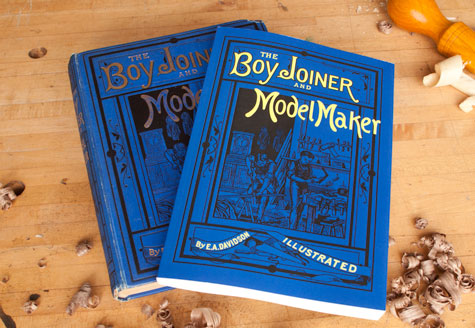|
|
|
 Joel's Blog Joel's Blog |
 Built-It Blog Built-It Blog |
 Video Roundup Video Roundup |
 Classes & Events Classes & Events |
 Work Magazine Work Magazine |
| Newer Entries... | |
 | Cheater Pastrami and Getting Stuff Done - 01/20/2011 |
 | Winding Sticks - 01/18/2011 |
 | Dye Young - Stain Pretty - 01/13/2011 |
 | Where the Factory Was - 01/11/2011 |
 | New for 2011 - 12/30/2010 |
 | Truer Grit - 12/25/2010 |
 | The Traditional Tail Vise - Followup - 12/21/2010 |
 | The Argument for a Traditional Tail Vise - 12/16/2010 |
 | Some Tips on Using Our Gramercy Holdfasts - 12/14/2010 |
 | New Book: The Boy Joiner and Model Maker - 12/09/2010 |
 | Coursework - Books that You Can Learn From - 12/07/2010 |
 | Introducing The Gramercy Tools Veneer Saw - 12/02/2010 |
 | Wood - In the Rough or What? - 11/30/2010 |
 | Tool Test - Norris A5 - How Well Do They Work? - 11/24/2010 |
 | Ray Iles Adds A 1/8 Inch Mortise Chisel To The Line - 11/22/2010 |
 | Resources - Information is Power - EEBO! - 11/18/2010 |
 | Native South American Shovels, Axes, and Machetes - Made In England - 11/16/2010 |
 | Lots and Lots of Saw Patents - 11/14/2010 |
 | Flat Back? Good Idea? How Flat is Flat? - 11/11/2010 |
 | Ghosts - Scenes From Our Village - 1856 - 11/09/2010 |
| Older Entries... | |
|
Hours: M-F 9:00-5:00, closed Sat,Sun Our Guarantee & Return Policy Shipping and Sales Tax Info Privacy Policy Holiday Calendar |
|
Contact Us:
Email: support@toolsforworkingwood.com Phone: 800-426-4613 or 718-499-5877 Visit Us in Brooklyn: Directions to Our Showroom © 1999-2019 toolsforworkingwood.com Powered by 01 Inc. Coded entirely in NYC |



 From 1874 comes a little book that we decided to put back in print because it was so charming.
From 1874 comes a little book that we decided to put back in print because it was so charming.
(And the Google deal you refer to concerns books that are still in copyright, not ones that are no longer protected.)
Since I am not a lawyer or an an authority on the subject I cannot do anything other than repeat what I have been told by other people who know more than I. If you were correct then there would be no market for reprinted books - but there is. On the Google deal I have read contrary information.
I just took a look at facsimile editions of a bunch of books by several publishers. Most include a copyright notice like we do. Dover does not.
Copyright of digital imaging of an original work is a fuzzy area and becoming more so as current court cases attempt to clarify the extent of claims.
What is clear is that, if substantive work has been applied to a photograph or scan of an original, out-of-copyright image (a page constitutes an image) such that the new version is no longer a precise facsimile of the original, then copyright of the IMAGE can be claimed. Copyright of the Textual or Graphic content cannot be claimed.
So, if the original image is reproduced precisely, with all warts and issues, at the original size and without any post-imaging work having been applied, then that IMAGE cannot be copyrighted. If the publisher makes sufficient changes that the new image, while recognizable as the original but now clearly an adaptation of that original, copyright can be claimed, again, for the Image (the page image).
The publisher cannot claim copyright to any part of the original text or to the original graphic images. The publisher can lay claim to the new version which has been cleaned, whether by hand or automatically through software, altered in contrast, color depth, etc. such that the new image is identifiable as being that of the publisher and not that of the original author/publisher.
And yes, although not an attorney, I am experienced in the niceties of copyright as it applies to reprints, libraries and digital reproduction for both archival and public consumption.
Gary